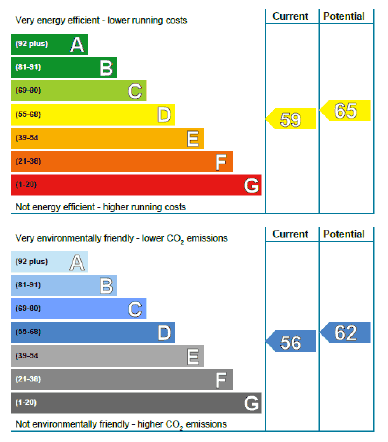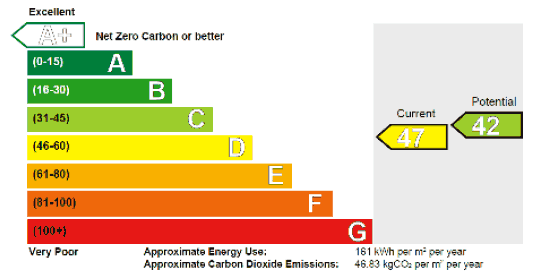Energy Efficient Scotland: strategic environmental assessment
This Strategic Environmental Assessment (SEA) investigates the likely significant effects on the environment by the implementation of the Energy Efficient Scotland programme.
Appendix B - Background information on Energy Efficient Scotland and the use of EPC
Introduction
This appendix provides a broad overview of the Programme to provide context for the policies and proposals assessed here, and is intended to provide background information on the work carried out to date, and the long term aspirations of the programme.
The Programme is a 15 to 20 year programme aimed at driving energy efficiency and a low carbon energy system in Scotland's homes and buildings. This supports one of the six energy priorities as set out by our Energy Strategy: that of improving energy efficiency, which we published in December 2017. [194]
The Programme will be instrumental in tackling fuel poverty and, in developing it, we will reflect the aims of our new Fuel Poverty Strategy taking account of recommendations made by the Fuel Poverty Strategic Working Group and Rural Fuel Poverty Task Force. A collaborative approach will be critical to delivering our ambitions on fuel poverty and the Programme is paving the way for innovation and coordinated efforts across sectors to find the most effective solutions for households no matter where they live in Scotland.
The Programme for Government commits to investing more than half a billion pounds to the Programme over the four years to 2020/21 setting out a clear commitment to develop this programme with substantial annual funding.
The Programme targets feed into our Climate Change commitments. The Scottish Government's world-leading climate change targets require emissions from across Scotland to be reduced by 42% by 2020 and at least 80% by 2050. The Climate Change Plan outlines the steps we will take to reduce emissions across the economy, including in the residential and services sectors, which will see their emissions reduced by 23% and 59% respectively by 2032 on 2015 levels.
Achieving these targets will mean that to be fit for the future Scotland's homes, commercial properties and public sector estate will need to be near zero carbon where feasible by the middle of this century. Scottish Ministers announced in June 2015 that they would take long term action to reduce building energy demand and decarbonise heat supply; designating energy efficiency as a national infrastructure priority. The Programme is the culmination of this thinking.
Programme Development
The scale and scope of the Programme is such that a phased development approach over a number of years has been adopted to enable successful development of all elements (including incentives, standards, regulations, supply chain, skills development, advice and information). Initial phases have focused on delivering existing programmes more effectively and developing a suite of pilot projects. These pilots have delivered real measures on the ground to test innovative and co-ordinated approaches to energy demand reduction in domestic and non-domestic buildings. These pilots continue into 2018 and beyond.
Significant public consultation and stakeholder engagement with delivery partners has already been undertaken, including:
- Draft Energy Strategy [195]
- Scottish Energy Efficiency Programme consultation (annex to Energy Strategy) [196]
- Local Heat & Energy Efficiency Strategies and Regulation of District Heating (annex to Energy Strategy) [197]
- Climate Change Plan [198]
- Regulations and standards in the private rented sector [199]
- Fuel Poverty Strategy for Scotland [200]
- Energy Efficiency Standard for Social Housing ( EESSH) Review [201] , the original standard being subject to SEA [202] .
The draft Energy Strategy and Climate Change Plan were subject directly to strategic environmental assessment [203] and this assessment has helped inform subordinate policy development, including the development of the Programme.
In addition a second consultation considering the role of Local Heat & Energy Efficiency Strategies and the regulation of District and Communal Heating [204] within the Programme.
The Programme is now moving to its development phase, in which key elements of the programme will be developed and deployed over time to create the overall programme structure which is expected to be run through to circa 2020/2021. Thereafter full deployment of the programme will be subject to regular review, evaluation and refinement.
In the Autumn of 2016, the Scottish Government undertook a period of pre-consultation scoping work on scenarios for the whole programme with internal and external stakeholders.
Our initial high level scoping Consultation on Scotland's Energy Efficiency Programme in January 2017 set out the three key phases:
Early 2018: Design phase (now concluded) – including the setting of formal targets for the Programme through the Climate Change Plan and Energy Strategy –
2018 - 2020: Transitional development phase - which we are currently in, in which the key elements of the Programme are developed and deployed over time to create the overall programme structure. This programme is set out in the Route Map, which is published in parallel with this consultation.
2020 onwards: Implementation phase - of the Programme which would be subject to regular review, evaluation and refinement [205] .
In addition the following consultations are also feeding into the development phase mentioned above:
Heat and Energy Efficiency Strategies and Regulation of District Housing (closed 24 Jan 2017)
Energy efficiency and condition standards in private rented housing: A Scotland's Energy Efficiency Programme Consultation (closed 30 Jun 2017)
Consultation on a Fuel Poverty Strategy for Scotland (closed 1 Feb 2018)
Scotland's Energy Efficiency Programme: Second Consultation on Local Heat and Energy Efficiency Strategies, and Regulation of District and Communal Heating (closed 20 Feb 2018)
The future of Energy Efficient Scotland
Later this year we will introduce a Fuel Poverty Bill that will set a target relating to the eradication of fuel poverty. We recognise that the lowest rates of fuel poverty are associated with higher energy efficiency standards, and underpinning the overarching statutory target we will set ambitious targets that will help us achieve our aim to eradicate poor energy efficiency as a driver of fuel poverty.
We have also committed to develop, if appropriate, a wider Bill to support the Programme for later in this Parliament. We recognise that for a programme as ambitious as this, it will be necessary to review our existing legislation and to consider what new powers or duties may be needed to underpin the programme. Stakeholders told us in our high level scoping consultation on Scotland's Energy Efficiency Programme during 2017 that there could be an important role for regulation and standards, supported by legislation.
The Routemap sets out that, as a minimum, we are considering the need for legislation to create a statutory duty for local authorities to develop Local Heat & Energy Efficiency Strategies ( LHEES) and for regulation of district heating. We have previously consulted o these issues. We recognise that other new or revised powers or duties may be needed to ensure delivery and funding across all strands of the Programme over its lifetime, and are inviting comment within this consultation accompanying the Routemap on what these may be.
Once fully operational, the Programme will be a whole system approach to delivering energy efficiency improvements and the provision of low carbon heat. A framework of energy efficiency standards, advice and funding will help create long-term consistency and confidence for consumers and industry, backed up by legislation where needed. The programme will also help support skills and supply chains across Scotland with appropriate protections for consumers.
During the initial phases of the Programme, we are focusing on delivering existing programmes more effectively and developing new pilot schemes to test delivery mechanisms for residential and non-domestic buildings. By 2050, through the Programme, we will have transformed the energy efficiency and heating of our buildings so that wherever feasible, buildings will have near zero carbon emissions.
Full implementation of the Programme will commence from 2020. The move towards the new delivery model will be preceded by a transitional development phase which will incrementally offer local authorities greater opportunities to plan and deliver integrated energy efficiency projects.
What are Energy Performance Certificates?
Energy Performance Certificates ( EPCs) provide information on how energy efficient your building is, and how it could be improved. Buildings are rated on a scale from A-G, with A being the most efficient. Information is also provided on measures which could be made to improve the energy efficiency and an indication of the cost for each improvement. An EPC must be produced when a new building has been constructed; and when a building is to be sold or rented to a new tenant [206] . An EPC must also be obtained and displayed in a building over 250 m 2 in area, which is occupied by a public authority and frequently visited by the public.
EPCs are valid for 10 years. [207] They are based on information such as the size and layout of a building, how it has been constructed and the way it is insulated, heated, ventilated, and lighted. Since people use buildings in different ways, the calculation is based on standardised assumptions of occupancy and use.
What do domestic EPCs show?
Domestic EPCs display an Energy Efficiency Rating ( EER) and an Environmental Impact Rating ( EIR). The EER is rated in terms of energy costs, while the EIR is rated in terms of carbon emissions.
Domestic EPCs also have numerical ratings, with a higher number suggesting greater energy efficiency.
On an EPC the numbered arrows show the current rating based on the existing energy performance of the property and the potential rating if the suggested improvements are implemented.
Responses to the Scotland's Energy Efficiency Programme consultation in 2017 showed that EPCs are well understood and provide a clear way to model and understand the energy efficiency performance of a building. There was a greater awareness of the EER measurement in the EPC compared to the EIR. This, as well as the existing use of the EER in the social housing sector, is why we will use the EER to set the long term standard.

How are non-domestic EPCs different?
The non-domestic EPC only contains one rating, which is based on projected carbon emissions rather than energy cost considerations. Therefore, in contrast to domestic ratings, a lower numerical rating for a non-domestic building suggests greater energy efficiency.
The approximate energy use for the non-domestic building (used to calculate emissions) is reported on an EPC but not expressed on a rating scale.
Non-domestic EPCs also differ from domestic ones because the standardised assumptions on occupancy and use which are used in the assessment vary by building type, resulting in wide variation in the average rating of different building types.

Contact
There is a problem
Thanks for your feedback